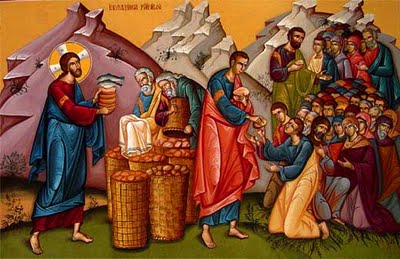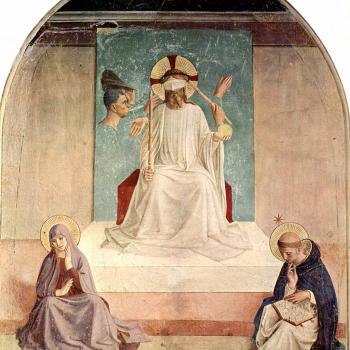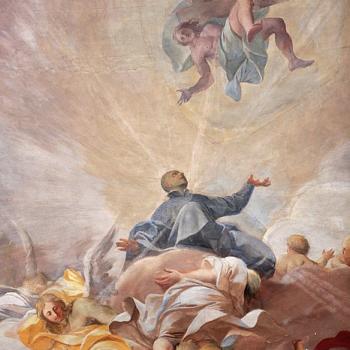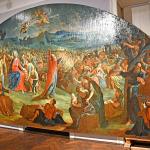
You may have noticed that
while we went through FOUR accounts of the words of institution we only covered THREE of the four Gospels! What is blue blazes is going on here!! Don’t worry all ye who love John. Although the fourth Gospel does not include the “words of institution” it does include a passage very much worth talking about.
Check out
John 6:22-59. The passage is pretty long so I’m not going to post the whole thing here. But in it Jesus is met by a crowd that is looking for him so that they might receive bread from him. They want to see him work a sign like was done in the time of Moses in the desert. This miracle is referenced throughout the Hebrew Bible (
Ps 78:24; Ex 16:4, 15; Neh 9:15; Ps 105:40) as a sign of God’s provision for his people. Jesus responds in a very bizarre way. He says “I am the bread from heaven.” Instead of associating himself with moses, he associates himself with the manna which is consumed. Many throughout the history of the church have associated this with the “Lord’s Supper.” I know I have run into
verses 53-55 over and over again as “proof texts” for transubstantiation, they read as follows:
“So Jesus said to them, “Truly, truly, I say to you, unless you eat the flesh of the Son of Man and drink His blood, you have no life in yourselves. “He who eats My flesh and drinks My blood has eternal life, and I will raise him up on the last day. “For My flesh is true food, and My blood is true drink. “
These verses at first glance seem to close to the Lord’s supper to be unrelated. However that connection is not explicit in the text. Although I think it is very important to think about this passage in the context of the Christian practice of celebrating the “Lord’s Supper” which was in practice in many churches at the time this Gospel was written, we have to be careful that we don’t import or export meaning that isn’t there. In this passage Jesus is actually making a DISTINCTION between himself and bread. The people came looking for food. Jesus offers himself instead. In the other four accounts Jesus relates himself to physical bread which is distributed. In this encounter people come looking for physical bread and Jesus offers his flesh. In response the Jews ask this question (verse 52), “How can this man give us His flesh to eat?”
I believe that question is one that we must never rest easy on. Is there a way that we encounter Christ in communion. I believe there is. Is that the end of the story? No, absolutely not! Jesus is confronting those who follow him for temporal satisfaction, and calling them to life eternal. This passage confronts the institution more then it establishes it. If we do not allow room for it to confront and transform our own lives we have missed the main point. This passage is not about transubstantiation, consubstantiation, sacramental union, or the Consensus Tigurinus. What I see more here is that the indwelling of Christ in us becomes so tactile and all encompassing that we are always finding ourselves somewhat offended at it’s uncouth occupation.













